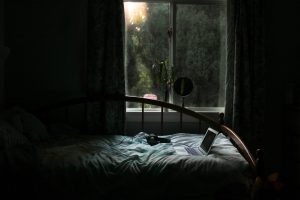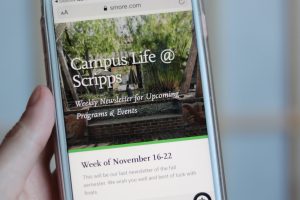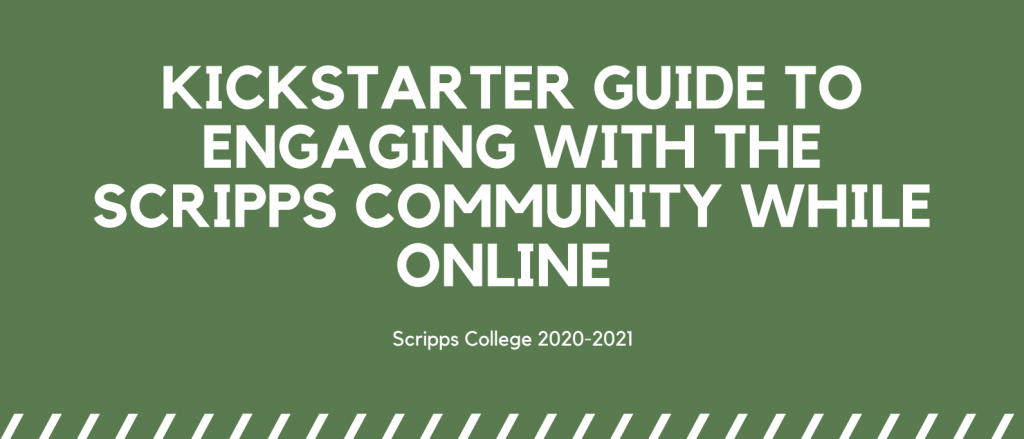Ellen Hu ’24
Staff Writer
As students left campus due to COVID-19 concerns in March, Sonya Hadley ’23 recorded herself saying goodbye to all of her friends and posted the videos on her Instagram account. Little did she know, those interactions would mark the beginning of a nine month physical separation from them.
“We were all just so used to being together at that point so it was definitely a hard transition,” Hadley said. “When I got home, we used to do calls all the time- we would eat together over call, we would play music over calls.”
Yet, as time continued, Hadley and her friends called less often. “Zoom fatigue is real, even if it’s just friends,” she said.
On March 11, Scripps students were told that they needed to evacuate campus over concerns regarding increasing COVID-19 cases in LA County. Students were given a week to move out with no specifications regarding when they would return to campus.
For Kenza Fernandez-Dominguez ’22, the change was “drastic” not only because the unprecedented change left classes less engaging for the rest of the Spring semester, but also because of the social aspects of daily life.
“I went from seeing 400 plus people on the daily and then also my nuclear group of friends every single day to being alone at home and not leaving,” Fernandez-Dominguiez said. “I think I didn’t leave my home the first seventy days so it was super intense.”
Like Hadley, Fernandez-Dominguez participated in more calls with friends when students were sent home. She explained how the main difficulty for calls arises from each of her friends’ schedules and the time differences based on location.

Scripps students have been connecting with each other through video calls on Zoom or Facetime in their bedrooms and households. Image Source: Ellen Hu ’24
Scripps Residential Life Community Coordinator (CC) Nora Tahbaz ’21 agrees that time differences pose a big problem to scheduling calls and trying to engage the Scripps community in events.
“Some people who are living in India and other parts of Asia are really struggling because they are doing stuff in the middle of the night,” she said. ”If I had to be awake in the middle of the night I wouldn’t add on another Zoom event.”
The CC’s have attempted to combat this issue by creating different groups based on time zones and assigning a CC to put on events for those students at reasonable times. While the events are scheduled for a specific time zone group, students from other places are welcome to join as well.
Based on her own experience of leading two CC events every other week, Tahbaz says that participation by Scripps students is low. She accounts this pattern to Zoom fatigue and difficulties in spreading word about the events.
“It’s definitely hard to build a regular Scripps community because usually on campus the events will happen every night and be in your common room,” Tahbaz said. “With online, there’s not that kind of community and easy access to the events.”
Yet, first-year students seem to be engaging with these events on a more consistent level. “It’s much easier to stay in contact with the freshmen because they respond more to text messages and emails,” Tahbaz said. “But for older students it’s definitely harder to keep them involved in the Scripps community.”
As new members to the Scripps community, some first-year students have been trying to find their way through the college environment by engaging with CLORGs and attending events. Susan Park ’24 is one of these students.
“I’ve been joining as many clubs as possible,” Park said. She has joined the 5C Women’s Rugby Team, the 5C Pre-Vet Club, Asian American Sponsor Program (AASP) and Scripps Questbridge.
For others, it’s been difficult to find CLORGs to interact with. “I tried to join clubs, they just didn’t work out for several reasons,” Kyra Brosnahan ’24 said. “One of the clubs I wanted to join apparently disbanded because everyone graduated the year before and a lot of them are just a lot more awkward online which makes them less appealing.”
The online environment has made it difficult to keep meetings consistent for some CLORGs. Fernandez-Dominguez, a member of La Asociación, said that the group began the semester with weekly lunch Zoom meetings. Now, they meet once every two weeks. The group is a community-based organization made up of international students from Latin America.
Yet many students still view clubs as a nice way to connect in smaller environments. Hadley found that CLORGs had a difficult time transitioning to the online environment in the Spring 2020 semester, but is very happy with how they’ve adapted for the Fall.
“The nice thing about this semester is that because we started online, clubs were able to plan for that,” Hadley said. “I love the creativity- some clubs have been so creative on how to bring people together and build relationships.”
While there are many opportunities to engage with the Scripps community, some students feel that the dynamic between students from all of the 5Cs has shifted. “It’s been a little more challenging to engage in the 5C community,” Lauren Kim ’23 said. While she sees people from the other Claremont colleges in her classes, she said it feels different when students cannot physically visit other campuses.
Both Park and Brosnahan agree that the majority of their community comes from the friends they make in class. “I text them and we joke about funny things the professor said or make fun of material we think is funny,” Brosnahan said about the friends she’s made in her Core 1 class.
Additionally, social media has been an important part of first-year students’ community building. “My friend from Hawaii DM’ed me randomly on Instagram in March and since then we’ve been texting,” Park said. “We started to do Zoom calls, she introduced me to her CMC friends, and from there we’ve made a nice friend group.”
Social media has been an important tool for Scripps’ residential life team as well, according to Tahbaz. She greatly encourages students to follow those accounts and look out for updates. “Every week there are 24 to 30 events happening that we post about on Facebook groups, the SAS Instagram page, and the SAS email,” she said.

The Scripps Office of Residential Life sent out emails with weekly events run by CCs to students every week during the fall semester. Image Source: Ellen Hu ’24
First-year and transfer students are not the only new members of the Scripps community — Dean Marissiko Wheaton began working as the Director of SCORE in August.
“A lot of people recognize that this is a really challenging way to start a new job and to enter into the Scripps community so I’ve had a lot of people reach out to me,” Dean Wheaton said. “Both students leaders who want to reach out and meet me and let me know what is going on in each of their CLORGs, but then also a lot of faculty and staff members- my colleagues who have wanted to make sure that I feel supported.”
As her office puts out new material and events, Dean Wheaton knows that the online environment is not the same as being in-person. “There’s no substitute for having that common shared in-person experience,” she said.
What she sees is an opportunity to re-think the ways in which Scripps’ community interacts while we’re online.
“Let’s just create a completely new experience that has no comparison to the regular one,” she said. “Because the reality is that you’re all going to remember your college experience in a very different way than any person in the history of our world.”
While the online college environment is not ideal, there are many ways for students to get involved and stay involved on different levels. Dean Wheaton and Tahbaz agree that the smaller amount of engagement allows for greater personalization to those who attend events.
“All the CCs sent out an email early on to their regional group and I would encourage that if people want a specific event, just email through that to propose it,” Tahbaz said. “It’s definitely hard to figure out new events and if there’s something that we know other people want then we will happily set up an event for it.”
Dean Wheaton also sees engagement in these small numbers as a way to truly build connections. “Not a lot of people are showing up, but the benefit is that when you do arrive, it’s like an instant opportunity to really build a connection,” she said.
Still not sure how to engage in or find your community? We’ve compiled a list of resources to help you get out there.
Image Source: Ellen Hu ’24



